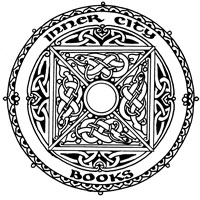
|
Please note that as of January 2019, Inner City Books is not accepting new manuscript submissions.

New and Recent Books

ISBN 9781894574488. Index. 160 pp. 2017. $30.00
C. G. Jung was arguably the most visionary psychologist of the twentieth century, and A. J. Toynbee the most celebrated historian of his generation. This book explores what they have in common.
Before I dive into Toynbee’s ideas and their connection to Jung’s late reflections, I will present an overview of both Toynbee’s and Jung’s lives, paying attention to how the same events shaped both men’s work in a very similar vein, expressed at points in a comparable vernacular, at points from a different, yet related, perspective.
In any case, the convergence of their understanding is not well known, though its pertinence to civilized life is to my mind utterly indispensable — far too essential to linger fallow in obscurity.
Gary Sparks,J. B.Sc., M.Div., M.A., is a graduate of Bucknell University in Lewisburg, PA; the Pacific School of Religion in Berkeley, CA; and the C.G. Jung Institute of Zurich, Switzerland. He is a former Peace Corps Korea Volunteer during the early 1970s and co-editor of Edward F. Edinger’s Science of the Soul (2002) and Ego and Self: The Old Testament Prophets (2000). He is widely known in North America for his lectures and seminars on the significance and application of Jungian psychology. (See www.jgsparks.net.)
[MORE]>>>
ISBN 9781894574464. 25 Illustrations. 64 pp. 2016. $25.00
8"x11" layflat binding.
Mandala Power
The Sanskrit word mandala means “whole circle” in the ordinary sense of the word. In the sphere of depth psychology, it refers to a sacred protective image, often a squared circle, or vice versa, enclosing many intricate, symmetrical forms.
 Mandalas have been created by all peoples everywhere at all times. They are “cosmograms”—images of an individual’s psychic reality, a snapshot of where one is at that moment—how they relate to themselves and the world around them. Mandalas have been created by all peoples everywhere at all times. They are “cosmograms”—images of an individual’s psychic reality, a snapshot of where one is at that moment—how they relate to themselves and the world around them.
The eminent Swiss psychiatrist C. G. Jung, after extensive research, discerned that mandalas are a traditional antidote for chaotic states of mind. Thus he encouraged his patients to draw, paint or dance mandalas when they were depressed or beset with conflicting desires.
In short, mandalas are images that help to heal the split or distressed personality, in service of the self-regulation of the psyche.
There is no need to be a skilled artist. Whether it is approached as meditation, sensation, reflection, or just playful activity, the act of using color and image to amplify the connection with the unconscious is an invitation to enrich one’s personal life. You can incorporate it into a ritual; use your favorite music; dance it; frame it—or simply use it as an instant portable entry to a different mode of being.
This coloring book is an invitation to play and create. It is an extension of Inner City Books’ mandate to promote Jung’s ideas. We wish you the joy of disappearing into these pages. Who knows what you will find in here, and in yourself?
Have fun and tell your friends!
About the Artist and His Work
In this collection, Ontario artist David Rankine provides twenty-five black and white images ready to be colored with whatever medium comes to hand. The result will be attractive, but their real power lies in the doing of them and subsequent meditation on their personal significance in terms of soul and psychic wholeness. They are essentially a spiritual practice with the purpose of being psychologically alert and present to oneself. For more information, visit davidrankineart.com.
[MORE]>>>
ISBN 9781894574457. Index. 128 pp. 2016. $25.00
In this book I revert to my earlier love of explicating Jung’s essays, interweaving Logos and my own whimsical Eros commentaries. Some passages may be familiar to readers, like a loved painting with a few added brush-strokes here and there.
Pocket Jung is written for the general reader who may not be acquainted with Jung’s own writings, many of which, intended for the specialist, are not easily understood by those who lack the technical knowledge that would enable them to appreciate the value and significance of Jung’s researches. Such knowledge is particularly necessary for an understanding of the alchemical research that occupied so much of his time and energy during the last twenty years of his life.
I have not attempted to make an exhaustive resume of Jung’s approach to psychic reality. Rather I have tried to set forth here some of the basic ideas on which his school of psychology rests.
The material of these chapters was originally presented over the years to an intelligent group of men and women in Columbus, Indianapolis, San Francisco, Vancouver, Winnipeg and Toronto, who were not very familiar with Jung. I hope that this relatively simple presentation may also meet the needs of a wider public. My intention has been to capture the richness of Jung’s thoughts and stimulate the reader to know more about Jung’s work and school of depth psychology. Jung’s primary aim was to raise the individual’s level of consciousness, so that she or he not be prey to unknown psychic forces, and that is my aim too. Now read on and savor some of the best of C. G. Jung.
The cover of this book is deliberately bland, so you can carry it around without anyone knowing you are discovering yourself.
Daryl Sharp, Dipl. Analytic Psych. (Zurich), M.A., B.Sc., B.J., is a graduate of the C. G. Jung Institute in Zurich and the author of many other books in the series Studies in Jungian Psychology by Jungian analysts. He is the publisher of Inner City Books in Toronto, Canada, where he has an analytic practice.
[MORE]>>>
|
| |
|




